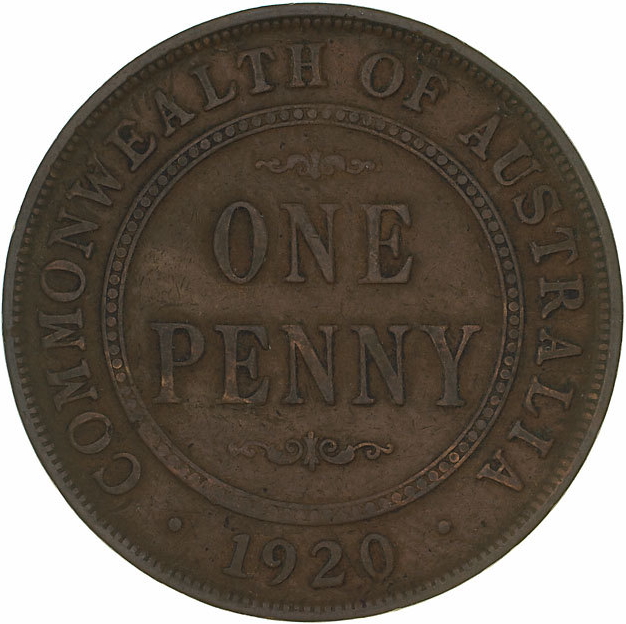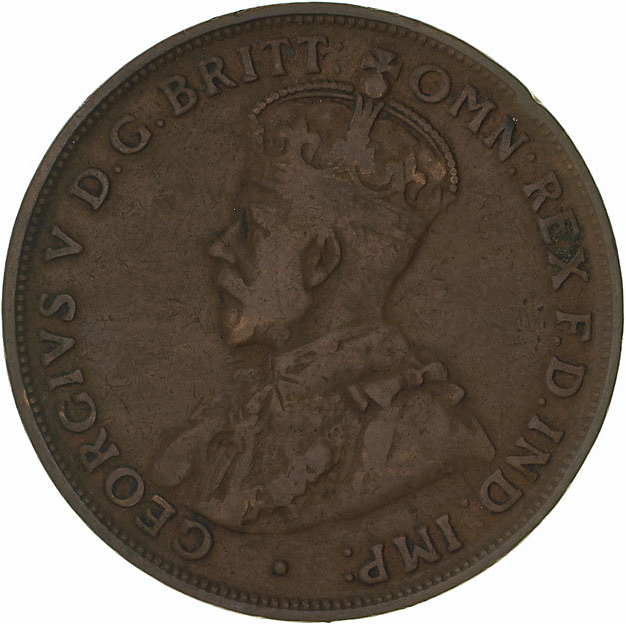1920 Dot Over Top Scroll Penny
There are seven known varieties of the 1920 Australian penny, and while the mintages of the different varieties are not known, the dot over top scroll or dot above top scroll variety is probably the second rarest. In a survey of 1,000 1920-dated pennies by Briggs there were 12 (p124, Briggs, Australian Copper (Bronze) Coins 1911 - 1964, 2013) suggesting they are 1.2% of the total mintage, while in another survey by an unknown collector of 1,490 1920-dated pennies there were 5 (Hoard of Predecimal Halfpennies & Pennies, copper.html, 2010) suggesting they are 0.33% of the total mintage. Research indicates that the the dot over top scroll pennies were most likely struck by the Melbourne Mint (p19, Effendi & Lever, The 1920 Penny Revisited (Part Four) The Enigmatic Double Dot and Dot Over Top 1920 Pennies in Australasian Coin and Banknote Magazine, March 2014). With the Melbourne Mint striking 7,018,800 pennies in 1920 the mintage can be estimated as somewhere between 23,000 and 84,000 coins. Andrews suggests a figure of around 20,000 (Andrews, http://thesandpit.net/index.php?option=1920dat_penny).


Correctly identifying a 1920 dot over top scroll penny can be difficult as it can easily be confused with a 1920 double dot penny. Andrews and Effendi & Lever agree on a number of diagnostics: double dot coins all have a horizontal bar above the W in COMMONWEALTH on the reverse while dot over top scroll coins do not; double dot coins have a very obvious top dot while dot over top scroll coins have a shallow top dor; and some but not all dot over top scroll coins have a small horizontal bar on the right of the last A in AUSTRALIA on the reverse, between the bar and the bottom serif (which can just be seen in the above images).
Images provided by Museum Victoria under Creative Commons Attribution 4.0 International